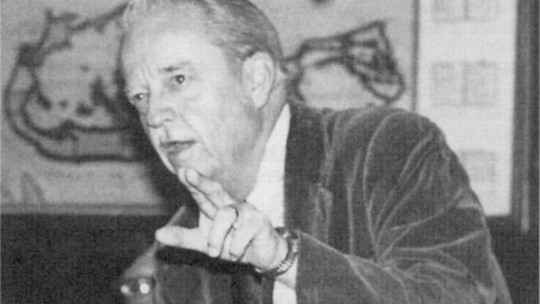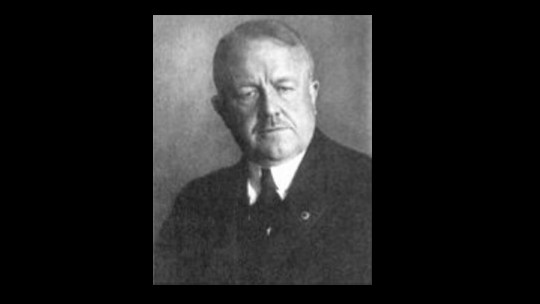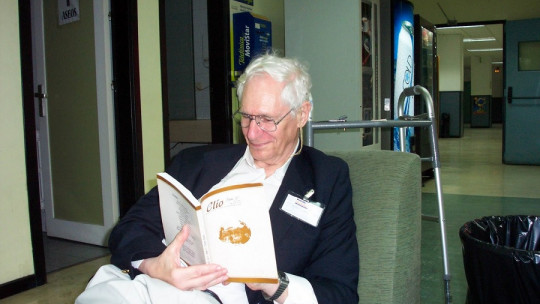If we talk about behavioral endocrinology, many of us may not know exactly what it entails. Well, this is the scientific branch in charge of studying what effect the neuroendocrine system has on behavior.
One of the most prominent figures in this scientific branch was the American ethologist Frank A. Beach (1911-1988), who was responsible for developing much of his fundamental research, through works such as “Patterns of sexual behavior” (1951). ”, one of his most recognized works.
In this article we will see a biography of Frank A. Beach and we will review his most important contributions in this field of knowledge.
Frank A. Beach: who was he?
Frank Ambrose Beach (1911-1988) was an American ethologist and psychobiologist, who was born on April 13, 1911 in Emporia (Kansas, United States) and who died on June 15, 1988, at the age of 77.
Due to his publications on the subject, many consider him the founder of behavioral endocrinology, a branch of endocrinology responsible for studying the neuroendocrine system, as well as its effects on behavior.
For its part, etiology is a branch of knowledge that arises from two sciences, biology and experimental psychology, and that is responsible for studying the behavior of animals whether in freedom, in their natural environments or in artificial laboratory conditions.
Relevant data
Frank A. Beach is especially remembered for his contributions to the field, not only of etiology, but also of psychobiology. In fact, he was one of the most outstanding figures of his generation in this second field of knowledge.
frank focused on studying the sexual behavior of animals, but also other types of instinctive behavior (maternal and paternal behavior or mating behavior, for example). This is why Frank is considered one of the founders of behavioral endocrinology, along with William C. Young.
Origin and academic career
Frank A. Beah was the first of three children. His parents were Frank Ambrose Beach and Bertha Robinson Beach. He began studying psychology in Emporia. One of the figures who influenced him was James B. Stroud. He graduated in 1932 and obtained a scholarship to research clinical psychology. Later, he did his thesis on color vision in rats.
Once your research is complete, He obtained another scholarship, this time at the University of Chicago, where he began working with psychologist Harvey Carr Frank A. Beach worked with very relevant figures, of which we will highlight the behavioral psychologist Karl Lashley.
Later, Frank moved again due to financial problems; This time he went to Kansas, specifically to the city of Yates Center, where he would work as a high school teacher. Kansas was where he met his wife, although they did not last long.
Passion for research
Years later, in 1935, Frank A. Beach returned to the University of Chicago and finished his doctoral thesis; his theme was The role of the neocortex in innate maternal behavior in rats
In these years he married Anna Beth Odenweller, his second wife. With her he started a family, and had two children: Susan and Frank. Unfortunately, Anna died in 1971, and Frank remarried, this time to Noel Gaustad.
In 1936, Frank began working (for a year) in the Cambridge laboratory of Karl Lashley, the behavioral psychologist with whom he had already met. There he conducted research on sexual behavior in animals.
Career path
Especially interested in animals, Frank A. Beach later left the more academic field (temporarily) and He began working at the American Museum of Natural History in New York (USA), where he spent a total of ten years.
Frank is especially remembered for his contributions to a very specific area of knowledge: endocrinology and animal neurology. Specifically, he made numerous contributions in relation to the influence of the neuronal and endocrine system on the behavior of animals
Once his stay at the New York Museum ended, Frank began working at Yale University, thus returning to the academic world. There he remained ten more years, studying, among other topics, the reproductive behavior of dogs.
Between the 50s and 60s, he was working as a psychology professor at various universities; yes, without stopping investigating. In 1978, Frank A. Beach became professor emeritus, and in 1986 he earned the APA Award for Distinguished Teaching in Biopsychology.
Outstanding works
One of the most outstanding and well-known works of Frank A. Beach, in addition to being a classic in its field, is Patterns of sexual behavior (1951), which he developed with the anthropologist Clellan S. Ford. Another of his notable works is Human sexuality in four perspectives (1977).
Beyond his two main works, we also find important publications and books by the author. Some of them are:
Death and legacy
The great contribution that Frank A. Beach made to the field of psychobiology, and also to that of behavioral neuroendocrinology, is undeniable. frank He spent his entire life researching, teaching and learning
We see it through a phrase of his, which says: “Increasing knowledge, in itself, is a justifiable way to spend one’s life.”
Thus, he focused his life on studying behavior; In fact, another of his famous quotes talks about it: “Man’s greatest problem today is not to understand and exploit his physical environment, but to understand and govern his own behavior.”
Death “caught” Frank A. Beach working and being active, as it could not be otherwise, and his last days in a hospital bed were spent reading scientific literature. Finally, he died on June 15, 1988, at the age of 77.









